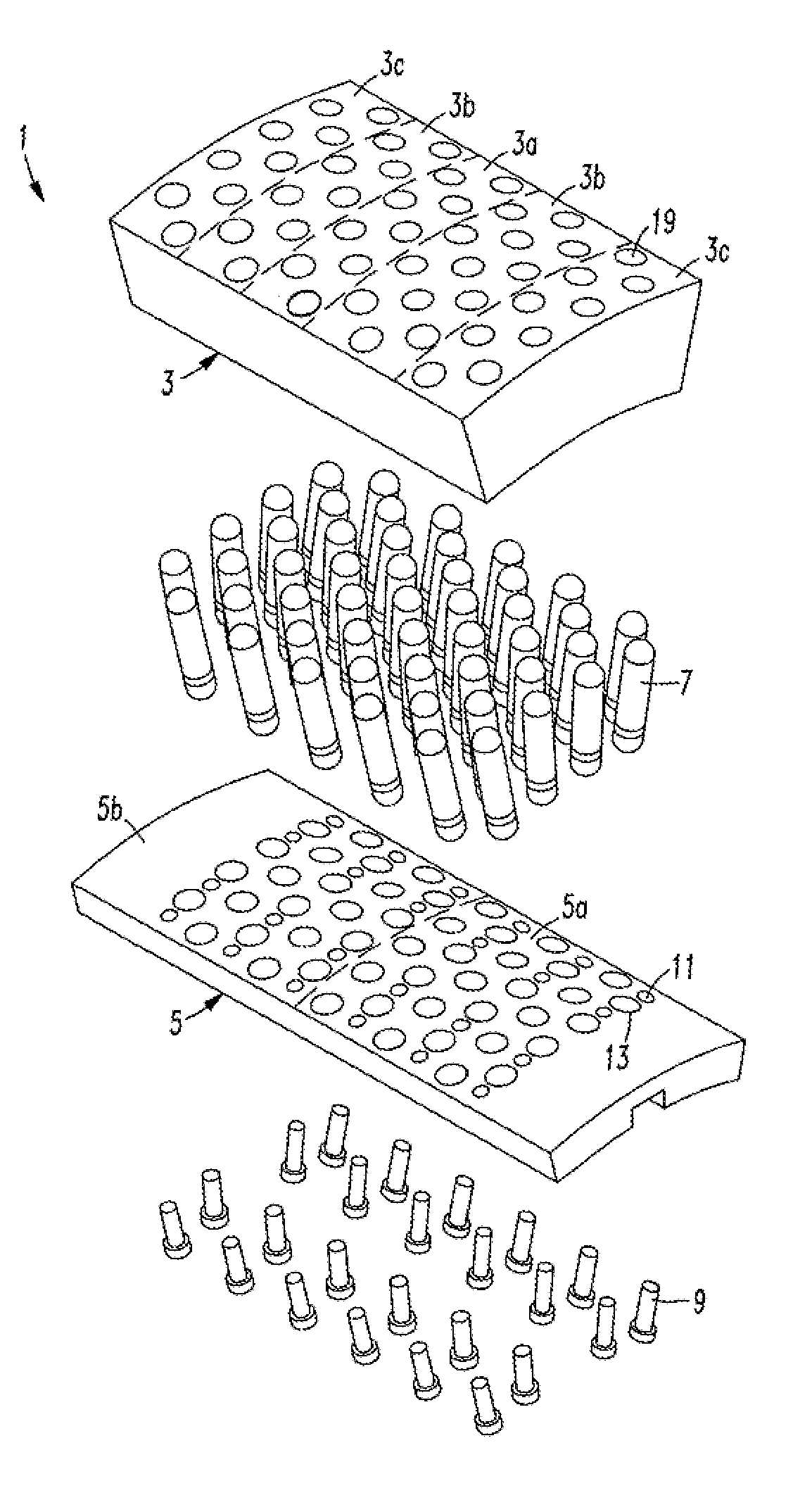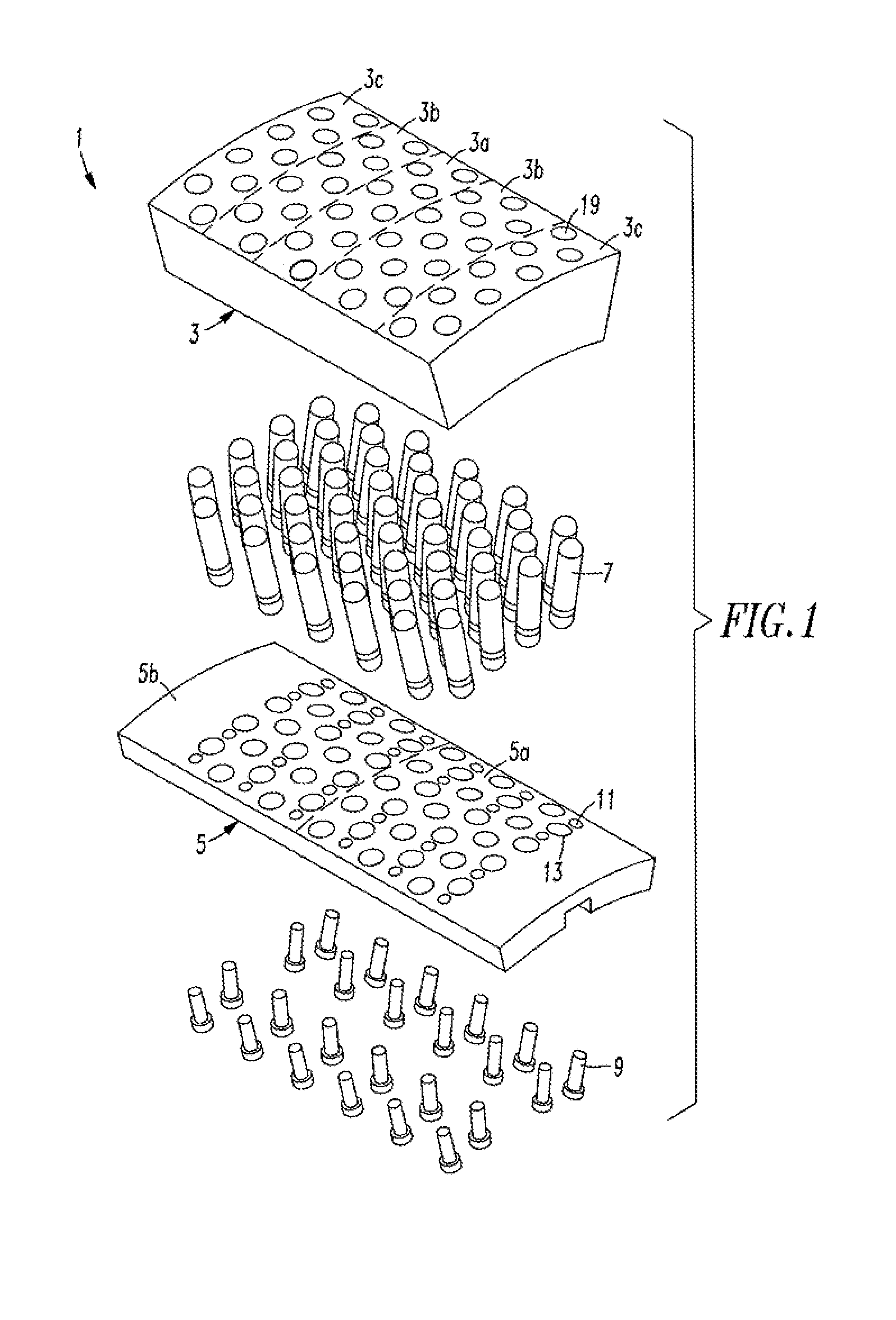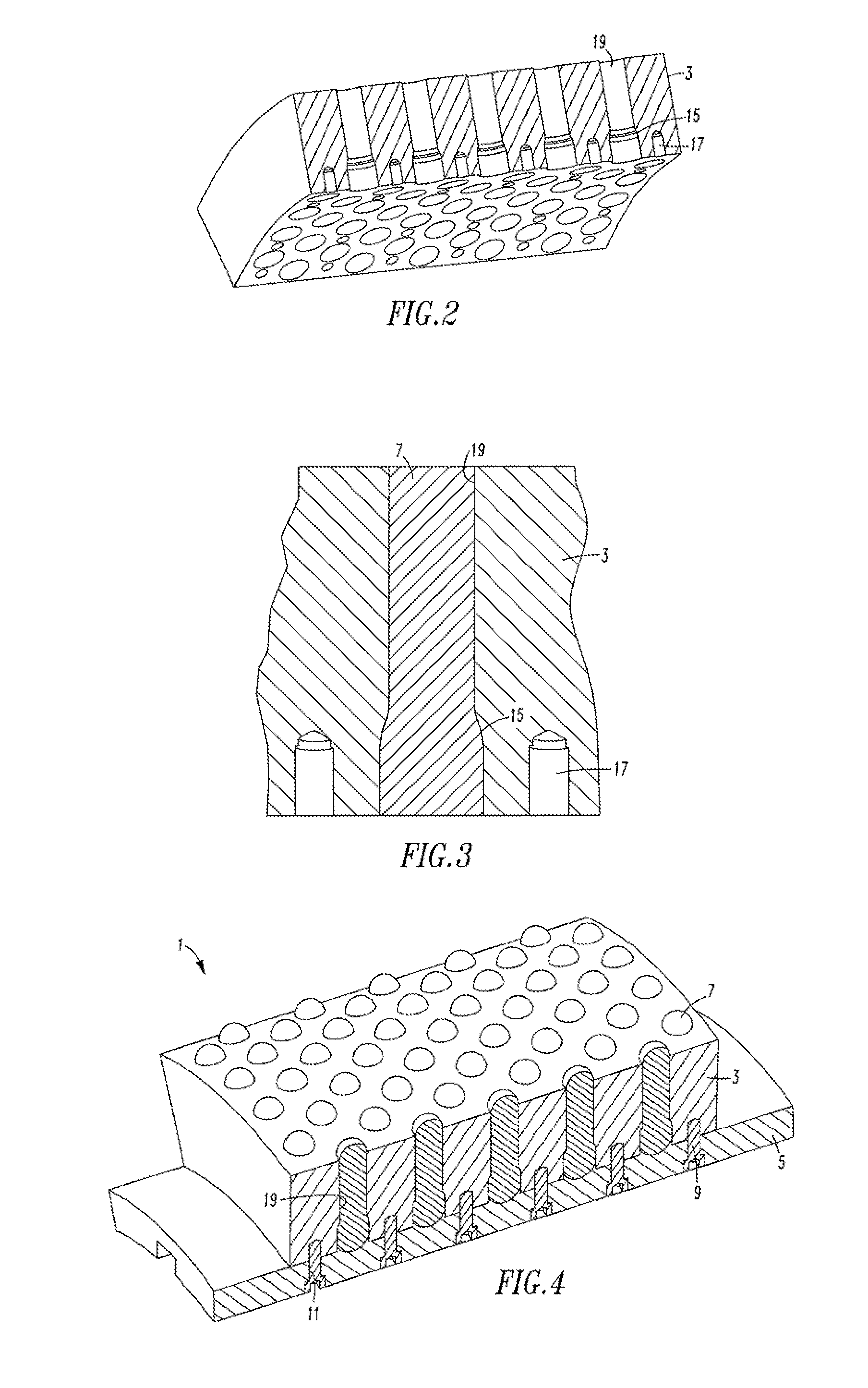Crushing body and method of making the same
a technology of crushing body and body, applied in the field of crushing body, can solve the problems of wearable surface, wearable surface often experiences wear, parts of wearable surface may erode or become broken, and achieve the effect of improving the stability and ultimately the life of the inser
- Summary
- Abstract
- Description
- Claims
- Application Information
AI Technical Summary
Benefits of technology
Problems solved by technology
Method used
Image
Examples
Embodiment Construction
[0053]Referring to FIG. 1, a crushing body 1 may include a wear body 3 that is attached to a mounting body 5. Inserts 7 may be positioned between the wear body 3 and the mounting body 5. A portion of each insert 7 may be positioned in a respective channel 19 of a plurality of channels 19 formed in the wear body 3. Each insert 7 may have a base portion 8 that fits within a recess 13 or aperture formed in the mounting body 5. Alternatively, the base portion 8 of each insert 7 may be supported by a boss or raised portion of the mounting body 5 (not shown).
[0054]Fasteners 9 may extend through holes 11 or other apertures in the mounting body 5 and into apertures or grooves 17 formed in the wear body 3, such as threaded openings formed in inserts positioned in the wear body 3, to mechanically attach the mounting body 5 to the wear body 3. Of course, the mounting body 5 may also be attached via an adhesive, welding or bonding agent in addition to the mechanical connection provided by the f...
PUM
| Property | Measurement | Unit |
|---|---|---|
| width | aaaaa | aaaaa |
| diameter | aaaaa | aaaaa |
| grinding forces | aaaaa | aaaaa |
Abstract
Description
Claims
Application Information
 Login to View More
Login to View More - R&D
- Intellectual Property
- Life Sciences
- Materials
- Tech Scout
- Unparalleled Data Quality
- Higher Quality Content
- 60% Fewer Hallucinations
Browse by: Latest US Patents, China's latest patents, Technical Efficacy Thesaurus, Application Domain, Technology Topic, Popular Technical Reports.
© 2025 PatSnap. All rights reserved.Legal|Privacy policy|Modern Slavery Act Transparency Statement|Sitemap|About US| Contact US: help@patsnap.com



